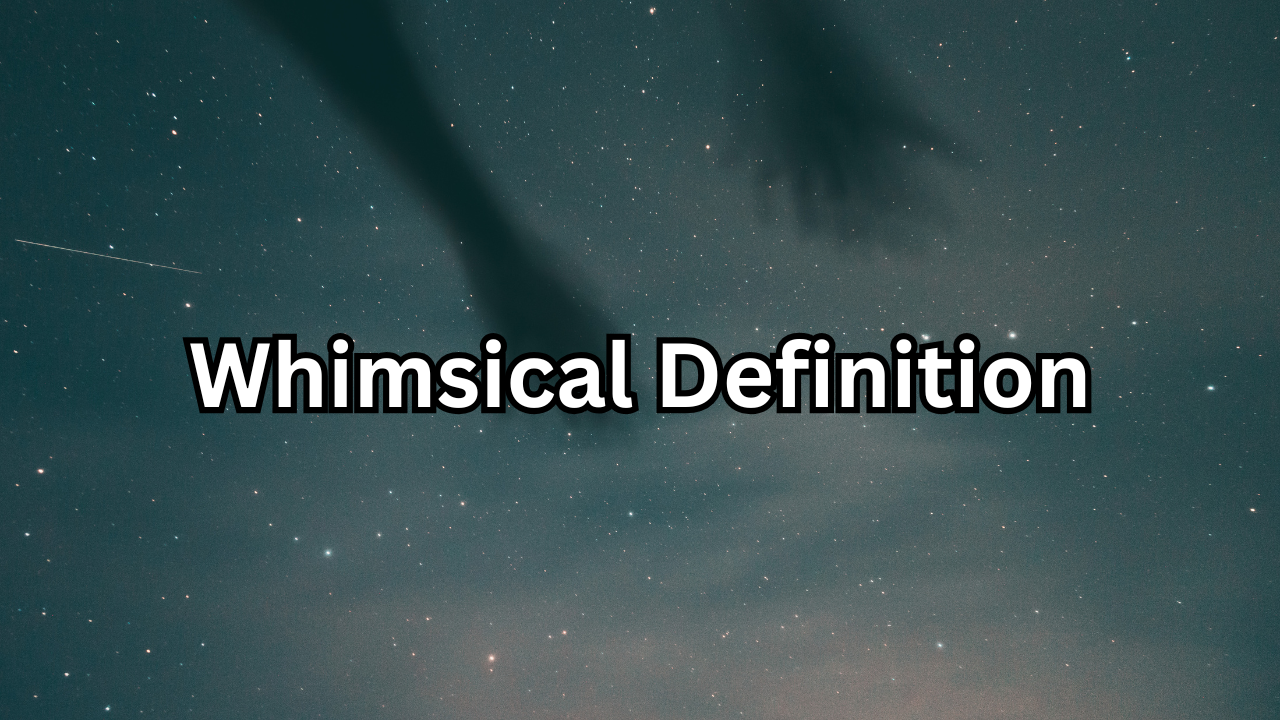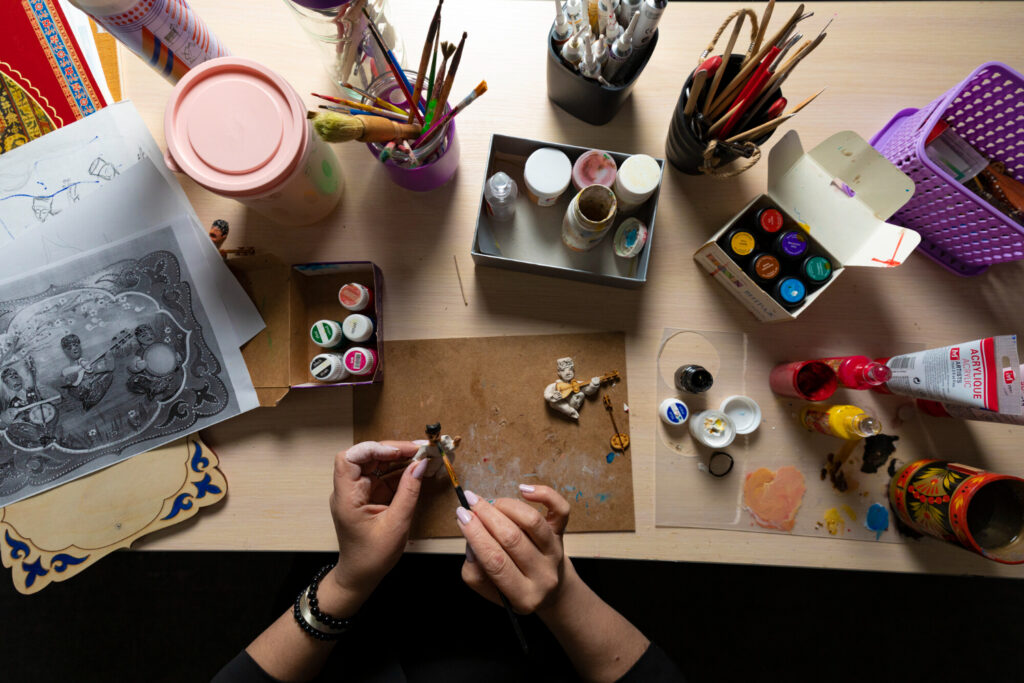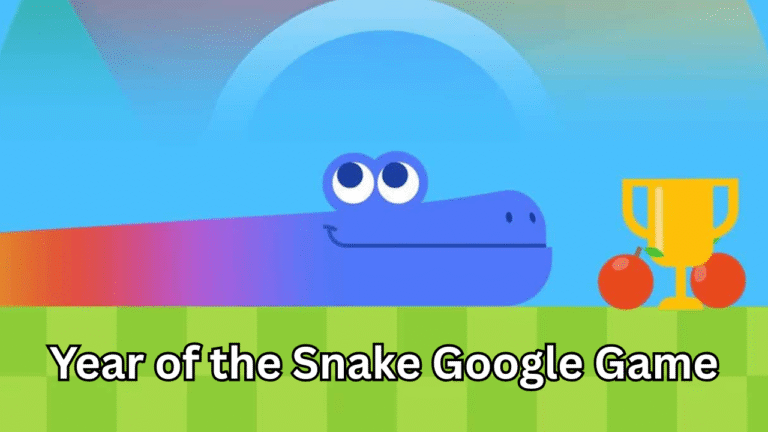
Understanding the Word “Whimsical”
Whimsical Definition – The word “whimsical” often appears in literature, art, and casual conversation, but many people only have a vague idea of what it truly means. At its core, “whimsical” describes something playful, imaginative, or slightly unusual, often in a charming and light-hearted way. It refers to ideas, actions, or designs that break free from the ordinary and express creativity in unexpected ways.
For example, a whimsical painting might feature flying cats or talking trees—something magical and dreamlike. Similarly, a whimsical personality describes someone who approaches life with spontaneity, humor, and curiosity.
In short, to be whimsical is to embrace imagination over logic, fun over formality, and creativity over conformity.

The Origin and History of “Whimsical”
The term “whimsical” comes from the word “whim”, which originally meant a sudden or odd idea. The English language adopted “whim” in the 17th century, and “whimsical” soon followed as an adjective describing things inspired by such unpredictable ideas.
“Whimsical” has always carried a sense of spontaneity and light-heartedness. During the Victorian era, it became popular to describe playful designs, fairy tales, and imaginative literature. Over time, its meaning evolved to include art, fashion, storytelling, and behavior that reflect creativity and individuality.
Today, it’s a popular word across many creative fields—from interior design to digital art and branding—because it conveys a sense of originality and joy.
The True Whimsical Definition in Modern Context
In modern usage, whimsical means something playful, quirky, or fanciful, often appealing to the imagination. It’s a word used to describe anything that feels delightfully unusual or charmingly unpredictable.
Here are a few examples of how “whimsical” can be applied:
- A whimsical outfit might combine bright colors, unexpected patterns, or vintage accessories.
- A whimsical story might feature talking animals or magical worlds.
- A whimsical design could involve curved lines, pastel tones, and a dreamlike atmosphere.
In all cases, the essence of whimsy lies in joyful creativity—something that feels light, refreshing, and a bit outside the norm.
The Psychology Behind Being Whimsical
Psychologically, being whimsical reflects a creative and open-minded mindset. Whimsical people tend to think beyond logic and find inspiration in simple pleasures. They are often curious, imaginative, and emotionally expressive.
Whimsical thinking can also be a form of emotional intelligence—the ability to find joy and humor even in ordinary situations. It’s what allows people to see beauty in randomness, make connections others might miss, and approach challenges with playful problem-solving.
Many psychologists suggest that maintaining a sense of whimsy is good for mental health. It encourages creativity, relaxation, and positive emotions, helping individuals manage stress and stay optimistic in daily life.

Whimsical in Art and Design
The term “whimsical” is often used in the creative world to describe art and design that evoke wonder or nostalgia. Whimsical designs typically include imaginative elements, soft color palettes, and fantastical themes that transport the viewer into another world.
In graphic design, whimsical styles often include hand-drawn illustrations, irregular shapes, or playful typography. In interior design, whimsical décor might feature unusual furniture, bright color combinations, and decorative elements inspired by fairy tales or childhood memories.
Artists and designers love using whimsy to spark emotion and connect with people on a deeper, more personal level. It’s not just about looking beautiful—it’s about making people feel something magical and memorable.
Whimsical in Literature and Storytelling
Literature has long celebrated the whimsical. From Lewis Carroll’s “Alice’s Adventures in Wonderland” to Dr. Seuss’s rhyming stories, whimsical writing draws readers into imaginative worlds filled with eccentric characters and dreamlike adventures.
Whimsical literature often blends fantasy and humor, creating an escape from the ordinary. It encourages readers to think differently and view reality through the lens of curiosity and wonder.
Even modern writers use whimsy as a storytelling tool—to make their narratives more engaging, unpredictable, and emotionally rich. The whimsical tone can transform a simple story into something unforgettable.
How to Use “Whimsical” in Sentences
Understanding the whimsical definition is one thing—but knowing how to use it naturally is what makes your language stand out. Here are some examples:
- “The café had a whimsical charm, with fairy lights and colorful murals.”
- “Her whimsical sense of humor made everyone smile.”
- “He designed a whimsical garden, full of hidden sculptures and winding paths.”
- “The movie’s whimsical storyline delighted both children and adults.”
When used correctly, the word adds a touch of playfulness and beauty to your expression. It paints a vivid picture that ordinary adjectives cannot capture.

Whimsical as a Personality Trait
If someone describes you as whimsical, take it as a compliment! It means you bring color, creativity, and joy into the lives of others. Whimsical people often have unique perspectives, bold ideas, and a spontaneous spirit.
They don’t follow the crowd—they invent their own paths. Whether in fashion, speech, or lifestyle, their approach is full of imagination and authenticity.
Being whimsical also shows confidence—the courage to express yourself freely without worrying about judgment. It’s about finding beauty in the unusual and celebrating what makes you different.
Why Whimsical Style Is So Popular Today
In today’s digital and fast-paced world, whimsical aesthetics have become a refreshing escape. Many brands, influencers, and artists adopt whimsical themes because they feel authentic, emotional, and visually captivating.
Social media platforms like Instagram and Pinterest are filled with whimsical content—from dreamy photography and colorful graphics to fairytale-inspired fashion. The style connects deeply with audiences who crave positivity and originality in an often-serious world.
Whimsy reminds us that it’s okay to have fun, break patterns, and let creativity flow without limits.
Final Thoughts on the Whimsical Definition
The definition of whimsical goes far beyond simple playfulness—it’s a philosophy of life. It encourages imagination, joy, and emotional connection. To be whimsical is to live authentically, think creatively, and find happiness in the unexpected.
Whether you’re describing art, fashion, or personality, the word “whimsical” always carries a touch of magic and individuality. It celebrates the beauty of imagination—the ability to see the world not just as it is, but as it could be.
So next time you come across something a little strange yet delightful, call it what it is: beautifully whimsical.
Also Read: Software Testing Basics: A Complete Guide to Understanding the Core Concepts






1 thought on “Whimsical Definition: Meaning, Origin, and How to Use It in Everyday Life”
Comments are closed.